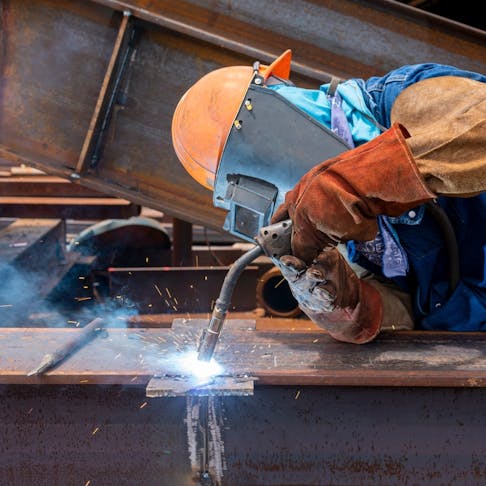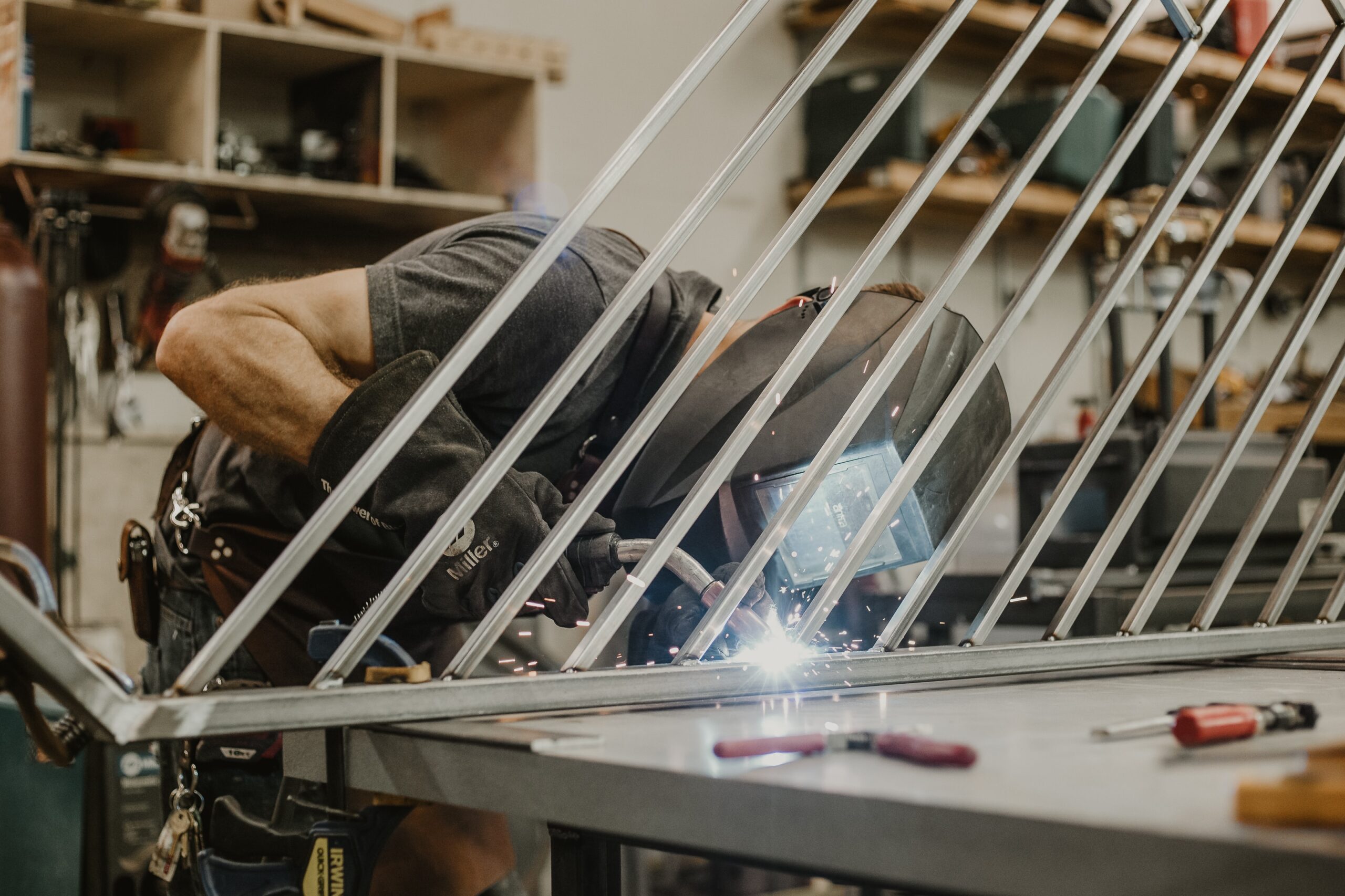Usual Welding Repair Issues and Just How to Address Them Successfully
Welding repair work usually come across a series of problems that can threaten the stability of the final product. Usual problems include insufficient penetration, porosity, and misalignment, to name a few. Each problem presents special challenges that require details methods for resolution. Understanding these concerns is vital for welders aiming to improve their results and abilities. This conversation will check out these usual welding repair issues and efficient techniques to address them.
Poor Infiltration
Poor penetration takes place when the weld steel fails to fully fuse with the base product, leading to weak joints and possible structural failings. This concern frequently stems from not enough warm input, wrong electrode angle, or inappropriate welding rate. Welders might encounter inadequate infiltration because of a mistake of the essential criteria for a specific material thickness or kind. Furthermore, contamination on the base material's surface can hinder effective bonding, aggravating the problem. To resolve poor penetration, welders ought to assure appropriate setups on their devices and keep a clean work surface. Regular examination of welds is suggested to identify any shortages early, enabling timely modifications and the avoidance of compromised structural stability in bonded settings up.
Porosity
Porosity is a common issue in bonded joints that manifests as little gas bubbles entraped within the weld steel. This issue can endanger the stability of the weld, resulting in lowered strength and potential failure under tension. Belgrade Fabrication. Porosity typically arises from contamination, moisture, or inappropriate welding techniques, which permit gases to escape right into the liquified weld swimming pool. To deal with porosity, welders ought to guarantee appropriate surface preparation, maintain a tidy workplace, and utilize ideal welding specifications. In addition, choosing the ideal filler material and shielding gas can mitigate gas entrapment. Regular assessment and testing of welds can assist determine porosity early, ensuring prompt corrective actions are taken, thereby maintaining the high quality and reliability of the welded structure
Imbalance
Misalignment in welding can develop from different variables, consisting of incorrect configuration and thermal expansion. Understanding the origin triggers is important for reliable resolution. Several improvement strategies are offered to realign parts and guarantee structural honesty.
Reasons for Imbalance
Welding misalignment typically stems from a variety of underlying problems that can jeopardize architectural stability. One key cause is inappropriate fit-up of parts prior to welding, which can bring about spaces and uneven surface areas. Variations in thermal growth during the welding process can likewise result in distortion, particularly if the products being signed up with have different coefficients of development. Furthermore, inadequate fixturing and clamping may stop working to hold parts securely in position, resulting in movement during welding. Improperly maintained devices, including welding devices and tools, may introduce variances in the weld bead, additional adding to misalignment. Driver mistake, stemming from not enough training or experience, can likewise play a substantial duty in creating misaligned welds.

Modification Techniques Offered
Addressing imbalance properly calls for a mix of corrective techniques tailored to the details concerns handy. One common technique is the use of jigs or fixtures to hold elements in the appropriate position during welding, making certain regular placement. In addition, pre-heating the materials can help minimize distortion and improve fit-up. For significant imbalance, mechanical realignment methods, such as utilizing hydraulic jacks or clamps, can be used to fix the setting prior to welding. Post-weld warm therapy might also be required to soothe tensions caused by imbalance. Careful examination and adjustment throughout the configuration phase can prevent misalignment problems from becoming significant troubles, promoting a smoother welding procedure and enhancing total structural stability.
Distortion
Distortion is an usual obstacle in welding that can occur from numerous aspects, including irregular heating & cooling. Understanding the sources of distortion is crucial for implementing efficient avoidance methods. Addressing this problem not just boosts architectural stability however likewise boosts the overall quality of the weld.
Root causes of Distortion
When subjected to the extreme warm of welding, products frequently go through changes that can cause distortion. This phenomenon mostly occurs from thermal development and contraction throughout the welding procedure. As the weld area heats up, the product expands; upon air conditioning, it acquires, which can produce interior stress and anxieties. Furthermore, uneven home heating throughout a work surface can worsen these stresses, resulting in warping or flexing. The kind of material likewise plays a significant duty; steels with varying thermal conductivity and coefficients of development may react in a different way, causing uncertain distortions. Moreover, poor joint layout and inadequate fixturing can contribute to imbalance during welding, increasing the chance of distortion. Understanding these causes is crucial for efficient welding repair and prevention approaches.
Avoidance Techniques
Effective avoidance methods for distortion during welding emphasis on controlling warmth input and ensuring correct joint design. Preserving a regular heat input helps auto welding near me to minimize thermal development and contraction, which can cause distortion. Making use of strategies such as preheating the workpiece can also decrease the temperature level gradient, promoting consistent home heating. Furthermore, choosing appropriate joint designs, such as T-joints or lap joints, can boost stability and lower stress and anxiety focus. Executing appropriate fixturing official website to safeguard the work surfaces in position further aids in preserving alignment during the welding process. Finally, staggered welding sequences can disperse heat extra uniformly, protecting against localized distortion. By applying these methods, welders can greatly decrease the probability of distortion and improve the overall quality of their welds.
Cracking
Cracking is an usual issue experienced in welding repairs, typically arising from different aspects such as inappropriate cooling rates, material selection, or inadequate joint preparation. The occurrence of splits can considerably jeopardize the honesty of the weld, leading to possible failures throughout procedure. To address this problem, welders must initially evaluate the origin, ensuring that materials are compatible and suitably selected for the particular application. Furthermore, regulating the cooling price during the welding process is important; quick cooling can cause stress and result in splitting. Proper joint design and preparation also add to reducing the threat. Implementing these techniques can boost weld top quality and toughness, inevitably minimizing the possibility of breaking in ended up weldments.

Insufficient Blend
A significant issue in welding repairs is incomplete combination, which happens when the weld steel does not sufficiently bond with the base product or previous weld passes - Montana Mobile Welding and Repair Belgrade Welding. This issue can result in weak points in the joint, potentially jeopardizing the integrity of the bonded structure. Aspects adding to insufficient fusion consist of not enough warmth input, incorrect welding strategy, and contamination of the surface areas being joined. To resolve this concern effectively, welders need to assure appropriate pre-weld cleaning and surface preparation, along with change their welding specifications to achieve appropriate infiltration and blend. Normal assessment throughout the welding process can also help try here determine incomplete combination early, allowing for prompt restorative actions to enhance the general top quality of the weld
Overheating
While welding fixings can enhance structural stability, overheating offers a substantial obstacle that can bring about material deterioration. Excessive heat during welding can modify the mechanical residential or commercial properties of metals, resulting in reduced stamina, enhanced brittleness, and warping. This sensation is especially crucial in high-stress applications where structural integrity is paramount. Identifying getting too hot can include aesthetic evaluations for discoloration or distortion, in addition to monitoring temperature during the welding procedure. To mitigate the dangers related to getting too hot, welders should use appropriate techniques, such as managing warm input, adjusting traveling speed, and using ideal filler products. In addition, carrying out pre- and post-weld heat treatments can aid bring back material properties and boost the general top quality of the repair service, guaranteeing lasting performance and safety.
Often Asked Concerns
What Are the Typical Indicators of a Welding Flaw?

Just How Can I Test My Welds for High quality?
To examine welds for top quality, one can make use of aesthetic examinations, ultrasonic testing, and radiographic approaches. Each strategy assures architectural honesty, determines defects, and verifies adherence to defined criteria, inevitably improving the integrity of the welded joints.
What Safety Precautions Should I Take While Welding?
When welding, one ought to focus on safety and security by putting on appropriate individual safety tools, making certain appropriate air flow, safeguarding combustible products away, keeping a tidy office, and understanding surroundings to stop mishaps and injuries.
Can I Repair a Weld Without Redoing the Entire Joint?
Fixing a weld without redesigning the whole joint is possible, depending on the damages (Montana Mobile Welding and Repair Belgrade Welding). Methods such as grinding, including filler material, or making use of a welding process can successfully attend to specific imperfections while preserving the bordering framework
What Devices Are Crucial for Efficient Welding Repairs?
Essential tools for reliable welding repair work consist of a welding machine, cable brush, mill, protective gear, clamps, and filler products. Each tool plays an essential role in ensuring high quality and security throughout the repair service process. Porosity commonly occurs from contamination, wetness, or inappropriate welding techniques, which permit gases to run away right into the molten weld swimming pool. Badly conserved tools, consisting of welding equipments and tools, may present incongruities in the weld bead, additional adding to misalignment. When subjected to the extreme heat of welding, materials usually go through modifications that can lead to distortion. Splitting is a common issue run into in welding repair work, usually resulting from numerous factors such as inappropriate air conditioning prices, product selection, or poor joint preparation. A considerable problem in welding repairs is incomplete blend, which takes place when the weld metal does not effectively bond with the base product or previous weld passes.